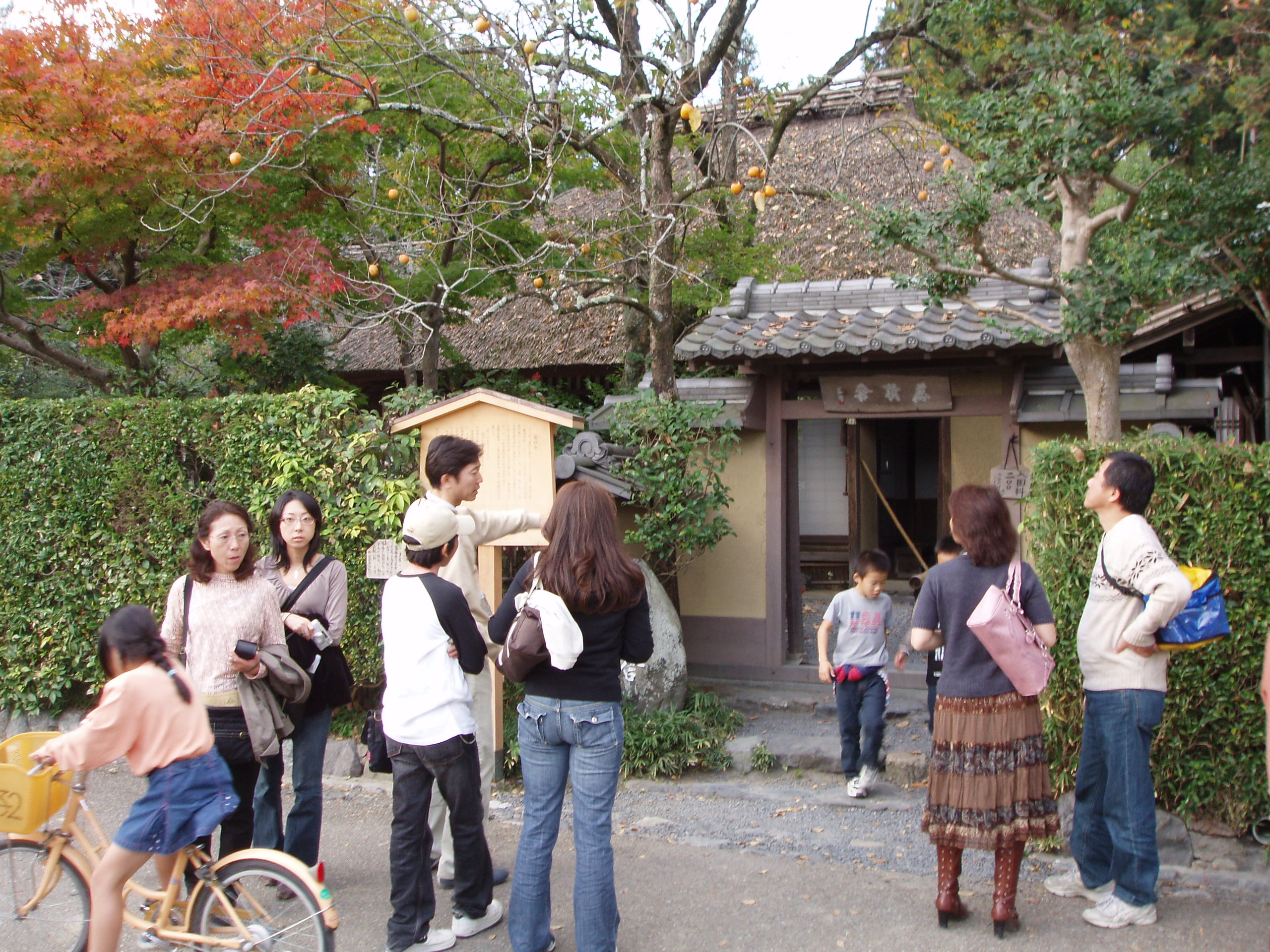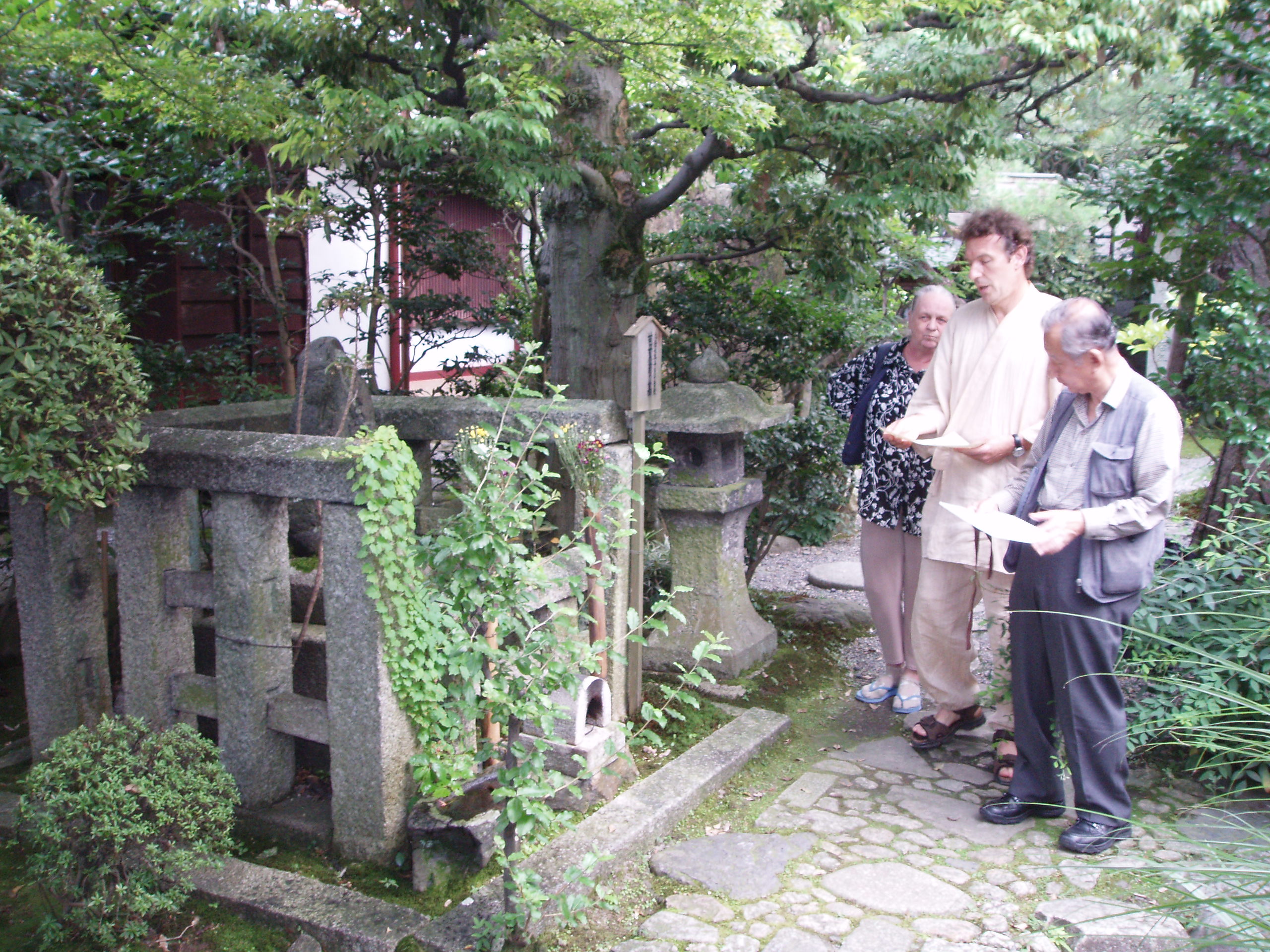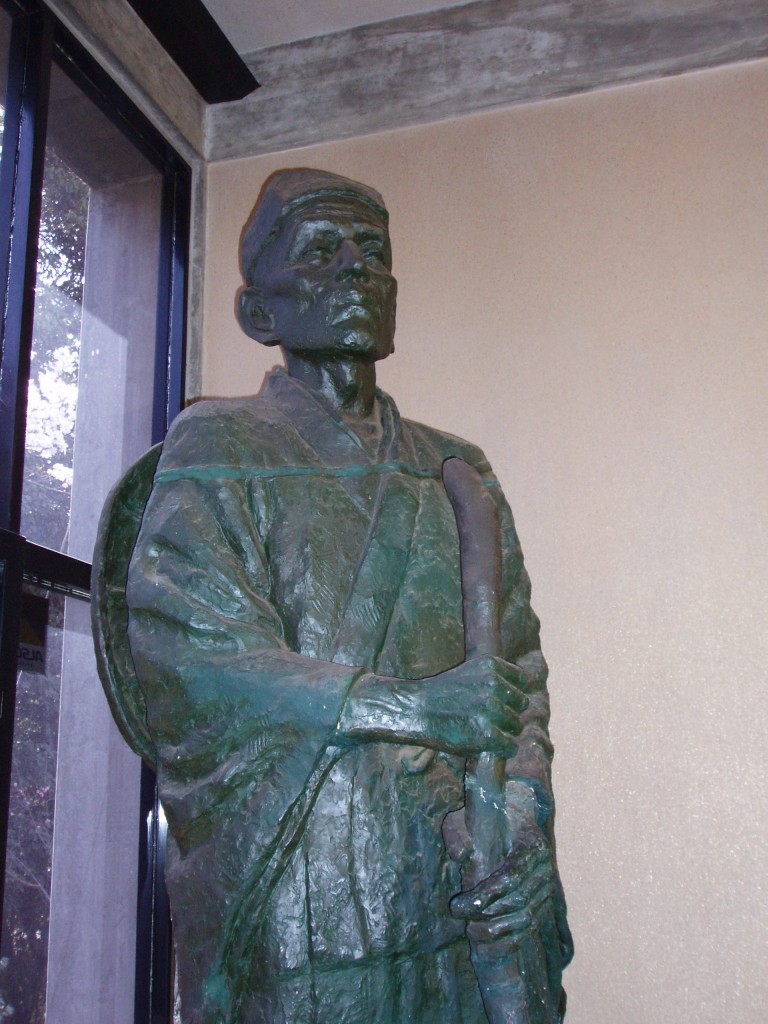Matsuo Basho (1644-94) is hardly associated with Kyoto. With the Deep North, of course. And with Edo too, where he had his home. Indeed, he took his pen-name from the plantain-tree (basho) which stood outside his hut there. Yet the poet-wanderer had close connections with the ancient capital. He was born not far away, in Iga Province, and may even have studied in Kyoto for a while as a young man. He was fond of the city, often visited on his wanderings, and it was in nearby Otsu by Lake Biwa that he chose to have his grave.
The poet had started out as a low-level samurai, but for reasons that are not clear he dropped out of a promising career and in 1672 moved to Edo. He studied Zen and came to see in haiku not an artistic diversion but a means to a meaningful life. This prompted his wanderings, for aware of the profound loneliness of existence, he sought solace in the ego-less world of nature.
Basho visited the Kyoto area on at least five occasions. He cherished the historical associations, especially with Saigyo, Sesshu and Rikyu to whom he felt bound by ‘the spirit of the artist who follows nature and befriends the four seasons’. He once wrote a haiku, soaked in nostalgia, of how the sound of a cuckoo drew him to the poetic past, perhaps reminded of Sei Shonagon’s fruitless expedition to the woods for a cuckoo-inspired poem. (See here for a discussion of the poem.)
Even in Kyoto,
I long for Kyoto,
When the cuckoo sings.
In 1684 the poet stayed by Lake Biwa, where he was light-heartedly challenged to include all eight of the ‘Famous Views’ of the lake in a single haiku. He cleverly responded like this:
Seven Views obscured –
But then in the mist I heard
The bell of Mie.
In 1690 Basho stayed for the summer near Lake Biwa in the Unreal Hut (Genju-an). It was on the side of a small hill, from the top of which he could see the lake with Seta Bridge and Mt. Mikawa, whose shape resembles Mt. Fuji. Here he relaxed after his long wanderings. He wrote an essay about his life of seclusion, telling of the simple pleasures he enjoyed – the views, the wild life, and the nearby places of interest.
During the day an old guardman or villager from the foot of the nearby hill comes to talk with me about unusual happenings, such as a wild boar foraging in the rice fields or a hare lurking around the barn yards. When the sun sets behind the hill and light comes, I sit quietly and wait for the moon. By the light of the moon, I walk around and my shadow follows me. When it gets late, I return to the hut to meditate on good and bad, gazing at the shadow’s edge cast by the lamplight. (tr. Keene)
Another short haibun written in 1690, Cooling Off by the River at Shijo, tells of the custom of partying on the yuta platform along the Kamogawa and of the joys that even the overbearing Kyoto summer heat can afford:
There’s a river breeze –
Wearing a thin garment
This summer evening
The next year Basho went to stay with one of his most important followers named Kyorai (1651-1704), who lived at Saga in The Hut of the Fallen Persimmons (Rakushisha). It was his second visit; he had visited in 1689, and was to come again in 1694, a few months before his death. He described the fifteen days at the hut in his Saga Diary (1691). In contrast to his usual accounts, it is a real diary with exact dates. It tells of a relaxed stay: ‘I forget my poverty, and enjoy a serene, leisurely life here,’ he wrote. Amongst the haiku he composed is one that suggests he was in a good frame of mind:
When I clap my hands
The echo brings the dawn light –
The summer moon.
Basho’s visit brought him into contact with another of his followers, Nozawa Boncho (?-1714). Together with Kyorai, the three men compiled The Monkey’s Cloak (1691), an anthology which represented the outcome of Basho’s thoughts on sabi – the loneliness of human existence and the consolations to be found in nature. The poets also wrote a renga, or ‘linked verse’ sequence, entitled ‘The Summer Moon’. The artform consists of one person writing a haiku, which is continued by another with a two-lined couplet of 7-7 syllables. This is further continued by a third with another haiku, and so on in turn. On this occasion Boncho provided the first verse;
Above a town
Filled with the odour of things,
The summer moon.
Basho responded with…
‘It’s hot,’ ‘It’s hot.’
Murmurs are heard in the front yards.
And Kyorai starting a new haiku added…
Though the second weeding
Is not yet over, rice plants
Shoot out their ears.
Three years later came Basho’s death, which occurred while he was near Osaka on another long journey. He had asked to be buried at Gichu-ji, a small temple at Otsu not far from the Unreal Hut. He loved the surroundings of Lake Biwa, and was attracted to the temple because it contained the grave of the Minamoto warrior, Kiso Yoshinaka, with whom he felt a special affinity. It would seem as a former samurai that he was attracted by the ‘heroic failure’ of Yoshinaka to rid Kyoto of the Heike (whom Basho disliked) and whose brave death soon afterwards on a battlefield near Otsu is memorably described in The Tale of the Heike. He had once visited the graveyard with the poet Yugen, whose haiku about the occasion has prompted much speculation.
Back to back
With Kiso Yoshinaka –
How cold it is.
The poet was apparently seated near Yoshinaka’s grave, facing away, and in the ‘cold’ of the last line lies the subtle nuance for which the haiku form is famed, for the multiplicity of meaning seems to embrace not only the wintry day, but a sense of loss, the gulf between humans, and the icy finger of death.
A hundred years after the time of Basho, a famous literary figure living in Kyoto came across a hut in the grounds of Kompoku-ji where the poet had once stayed. It was in dilapidated state, and in tribute to his predecessor he decided to restore it. His name was Yosa Buson (1716-84), poet and painter, recognised now as second only to Basho in terms of haiku. He was fond of the temple grounds, and he wrote evocatively of the sounds of the cuckoo in the bamboo grove. Such was Buson’s affinity with Basho that it was here Buson chose to be buried:
When I come to die
I shall be near his stone –
The withered pampas grass.
(Adapted with the author’s permission from John Dougill Kyoto: A Cultural History (Signal/OUP, 2006)
See Gabi Greve’s Basho page for other Kyoto haiku by Basho.



